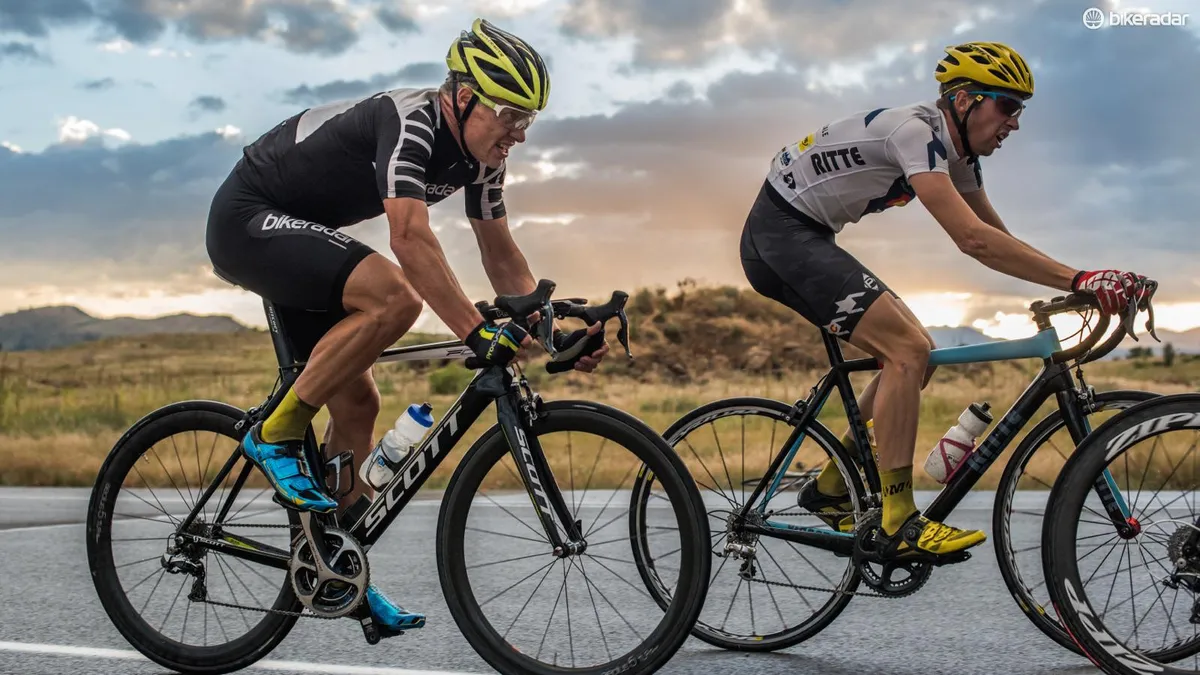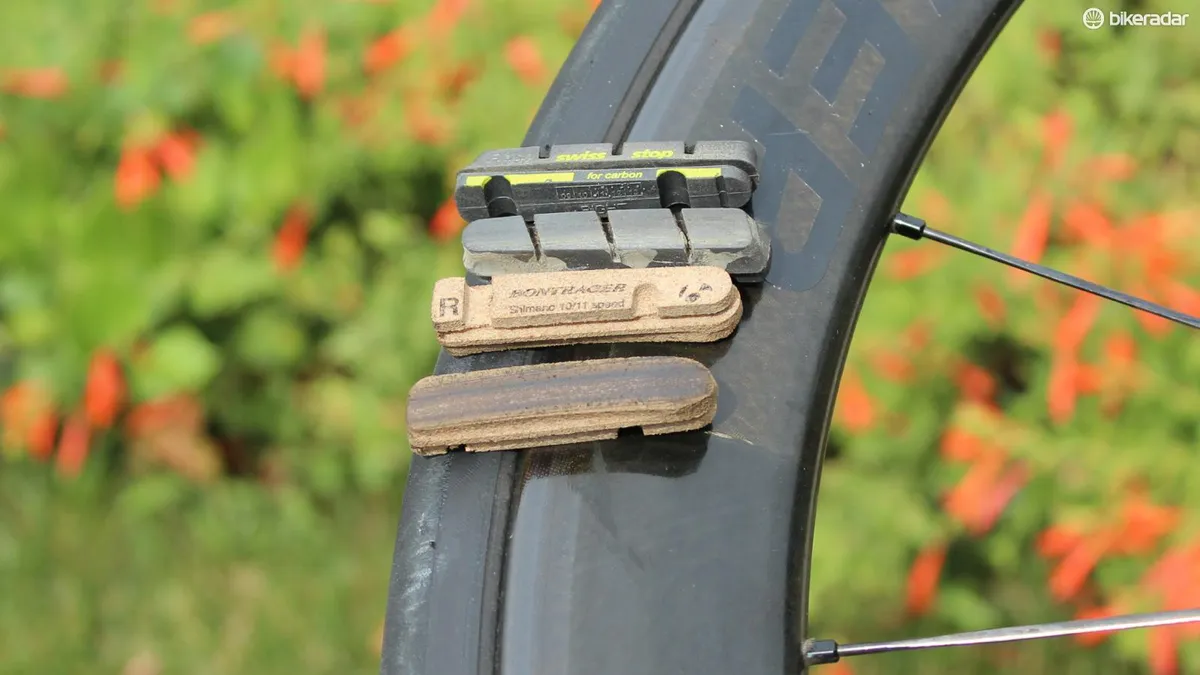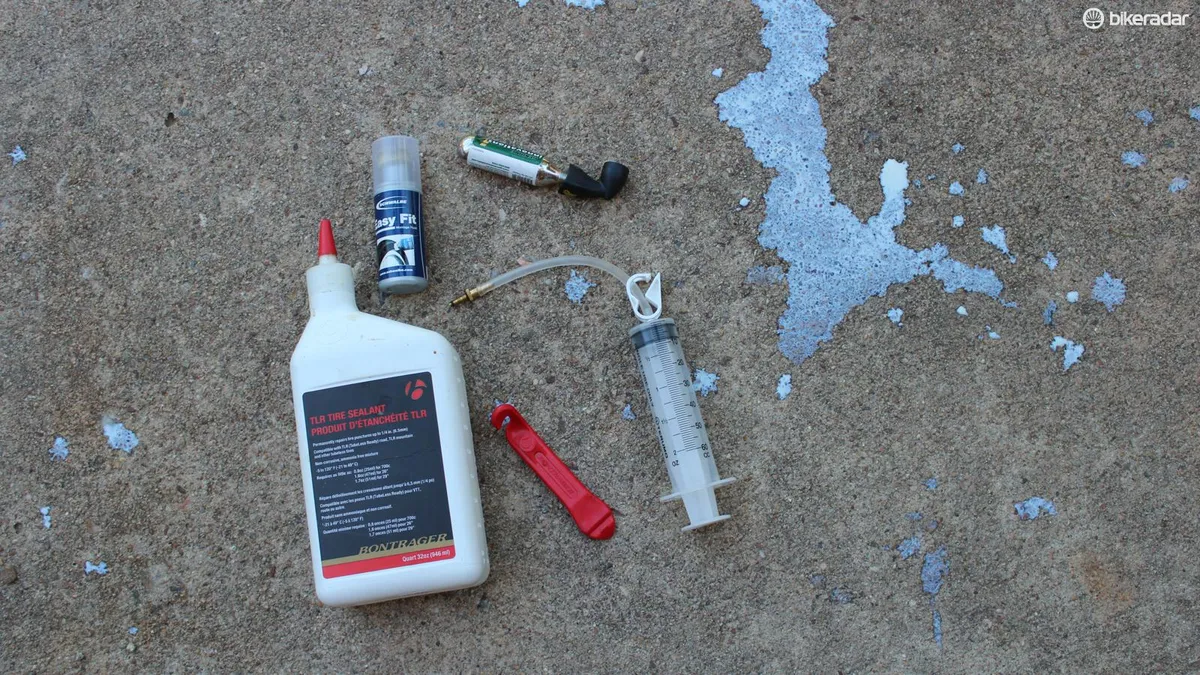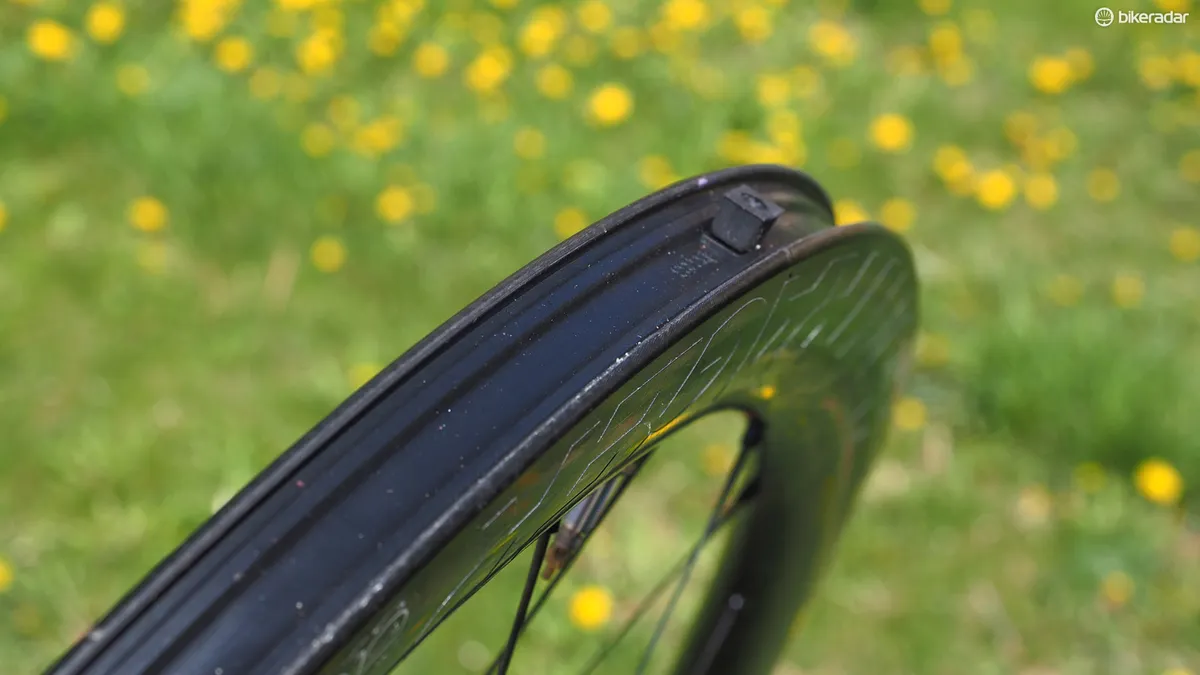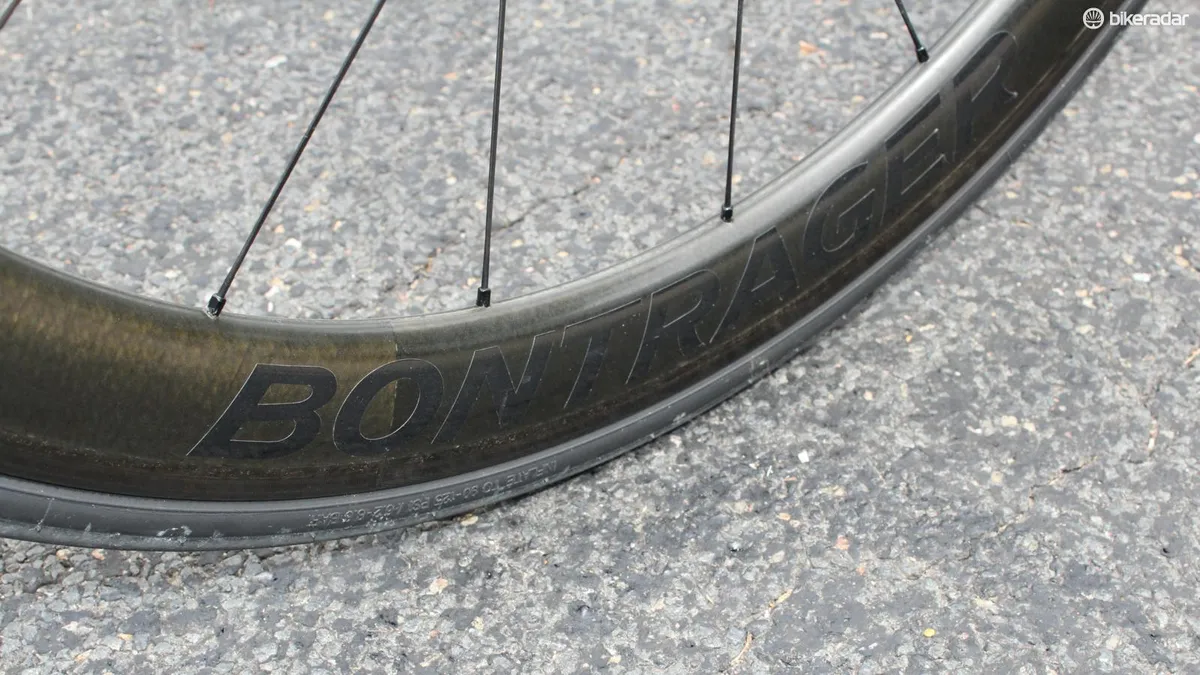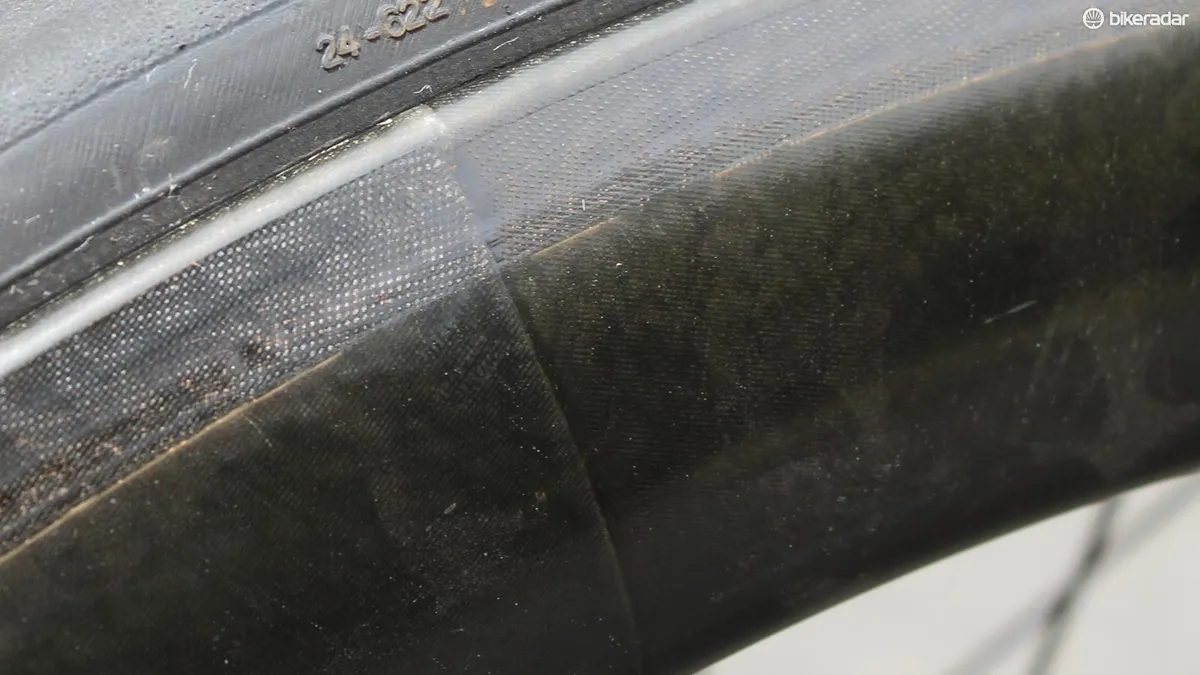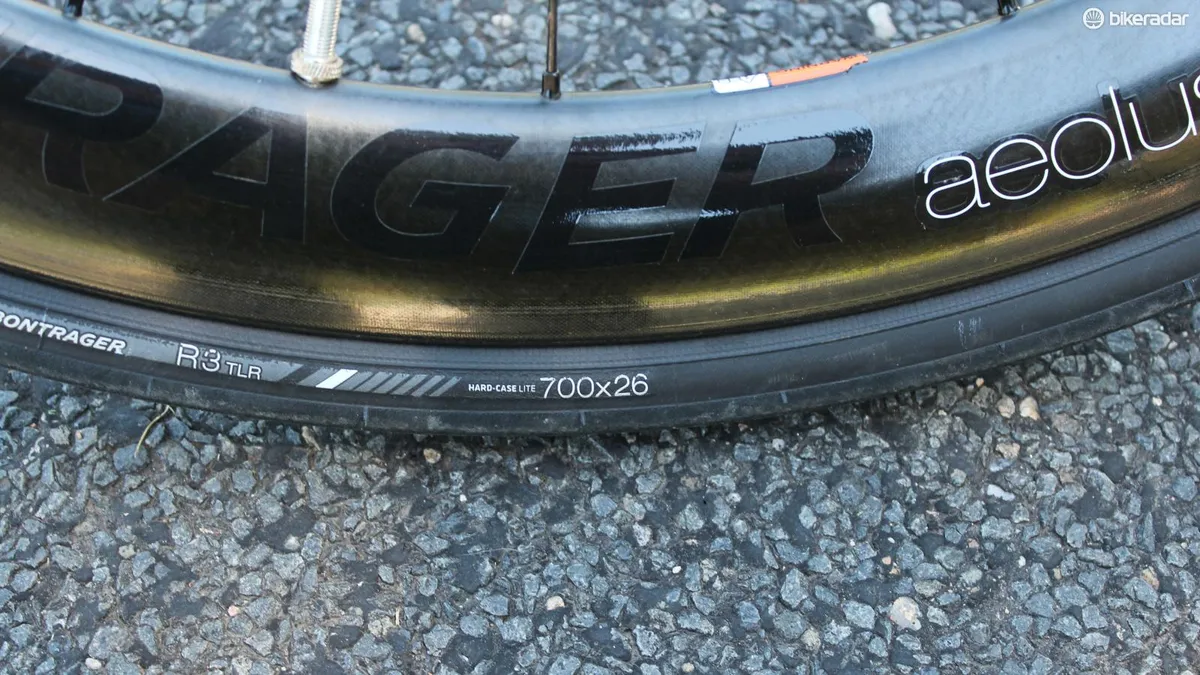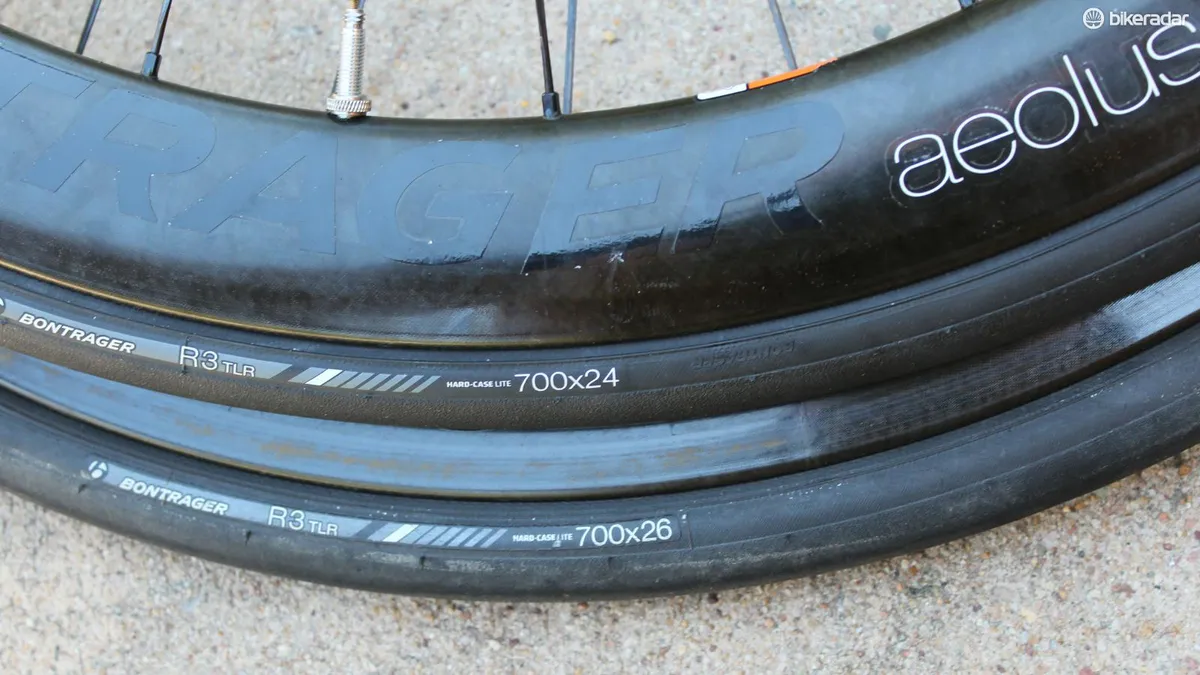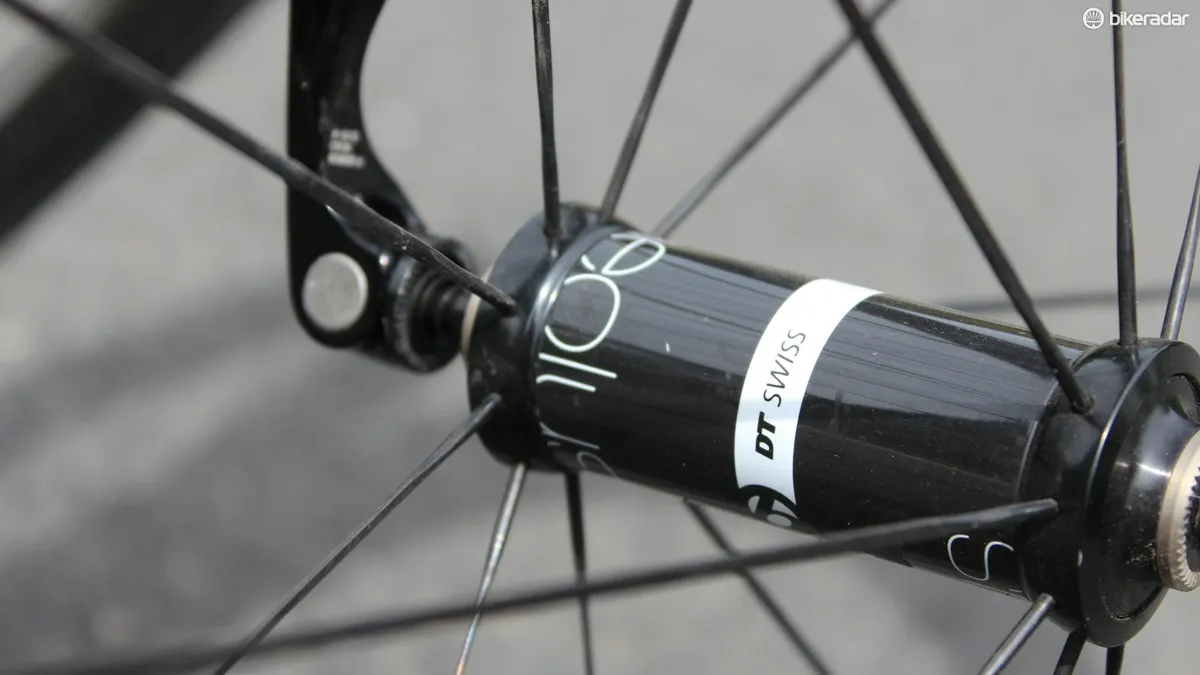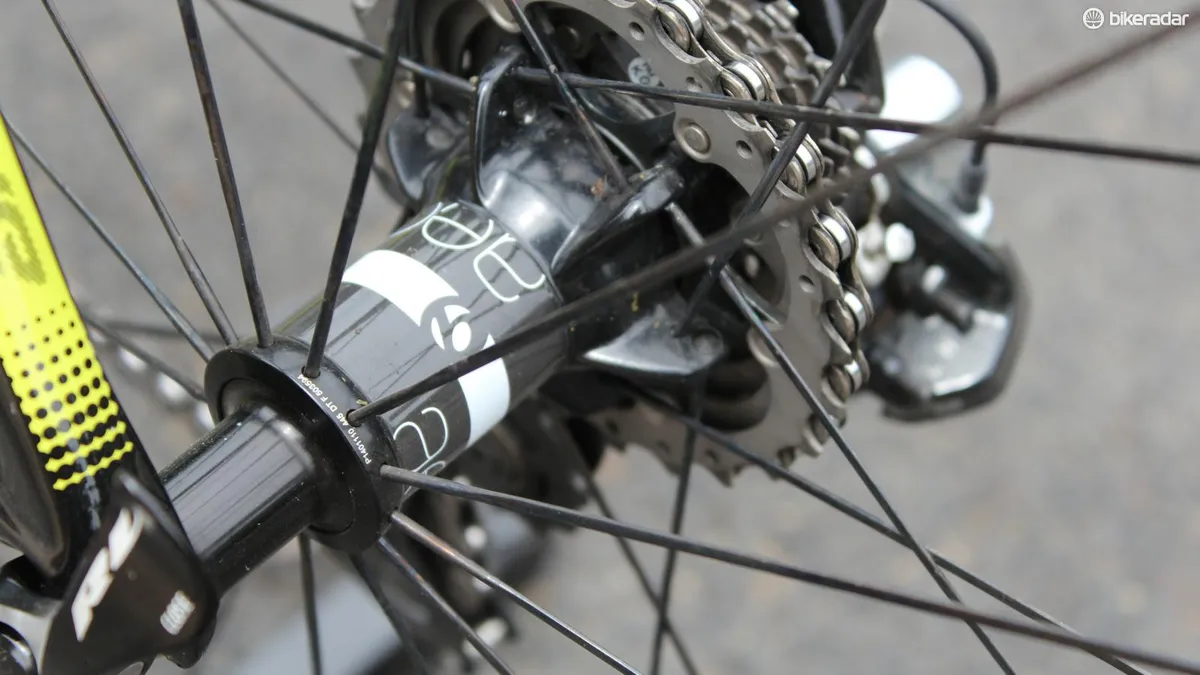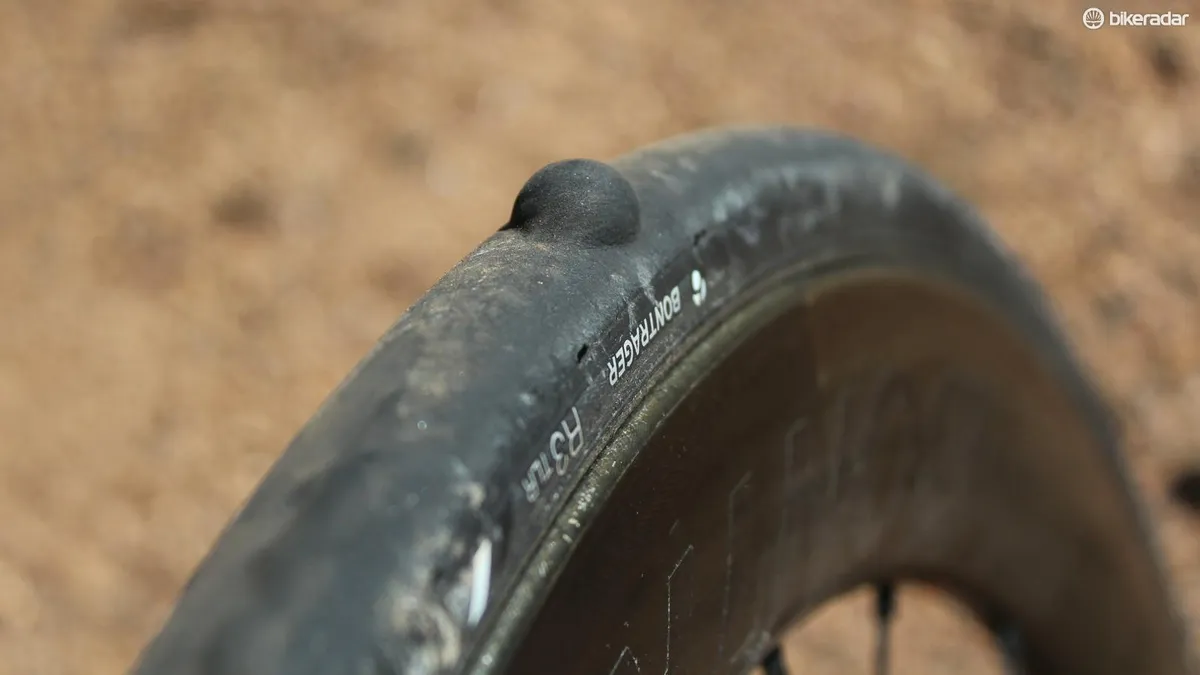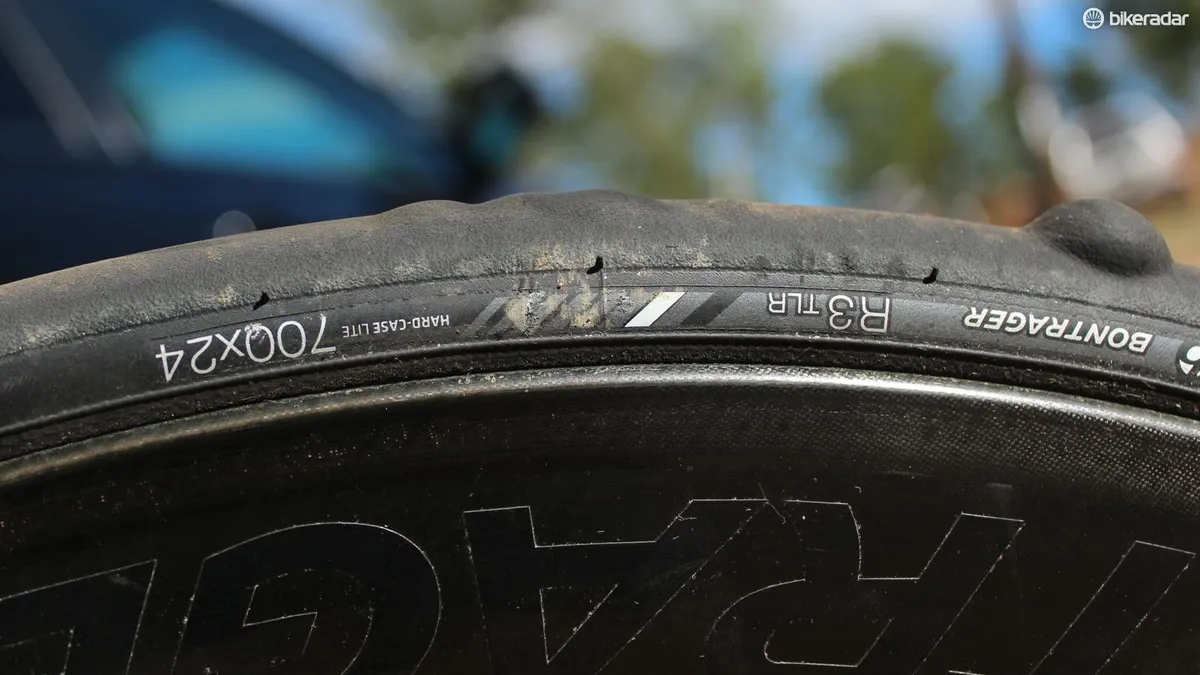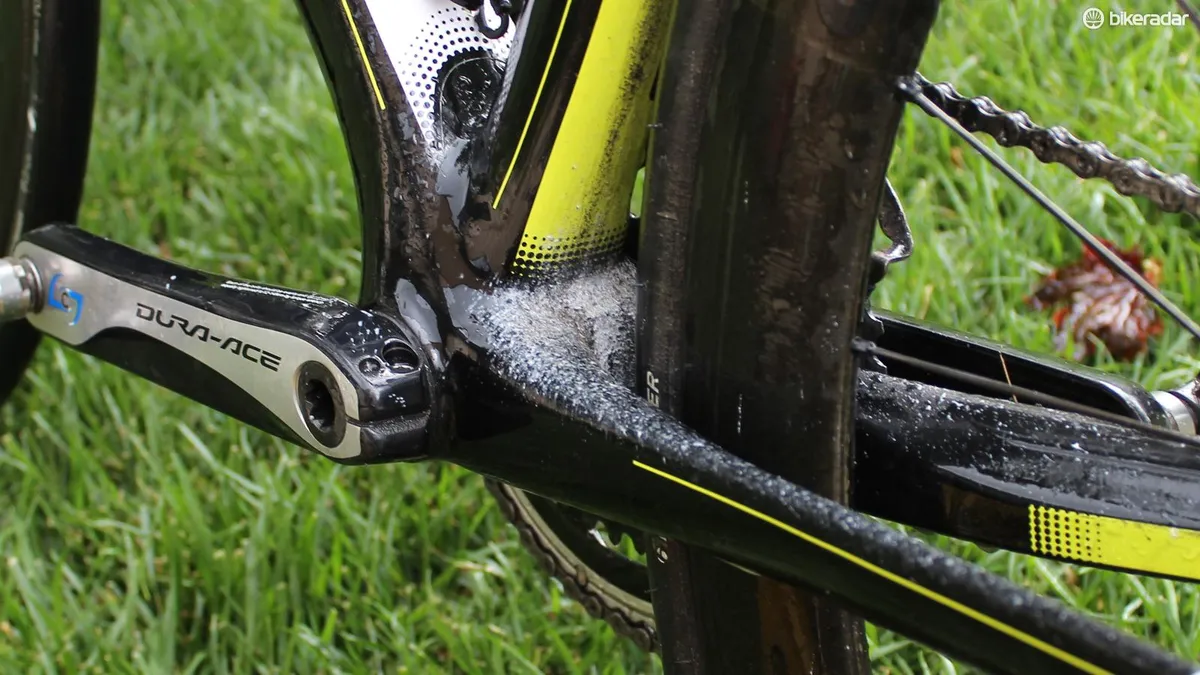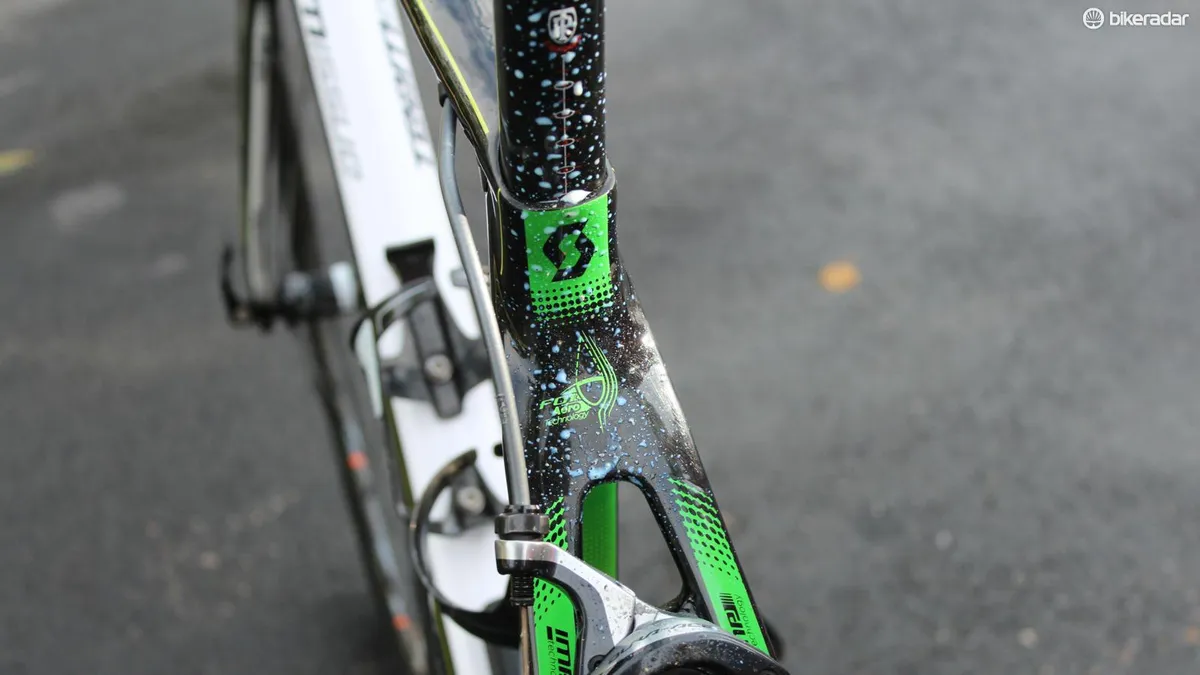Many big wheel brands now offer aero carbon clinchers, and road tubeless-ready alloy wheels are becoming more commonplace. But tubeless aero carbon clinchers?
That narrow sliver is held now by a very few, including Bontrager with the new Aeolus 5 TLR D3 carbon clinchers or Easton, with its EC Aero 55 hoops. With a wide-stance 19.5mm internal rim width, DT Swiss internals and snub-nosed 50mm carbon rim, the Bontrager Aeolus 5 TLR D3 wheelset has proven fast and durable in our testing, with a good road feel.
Bontrager claims these wheels match the aero performance of Zipp's venerable 404s and exceed that of the 303s. The D3 in the wheels' title stands for-dual directional design, referring to the fact that Bontrager engineers studied how the rim and tire effect aerodynamics at both the leading and the trailing edge of the wheel.
Our experience with Bontrager's tubeless tires has been a mixed bag — self-sealing punctures are nice if messy; one tire casing bubbled up when air escaped the inner chamber — but we will focus first on the wheels themselves, which are generally very good.
- Pros: Fast, stable in the wind, light, good braking, high-quality DT Swiss hubs, durable, wide rims
- Cons: Tubeless system requires new strips for each tire change and is messy to deal with, cost
- Buy if: You want a single carbon wheelset for everyday riding and racing — with tubeless compatibility
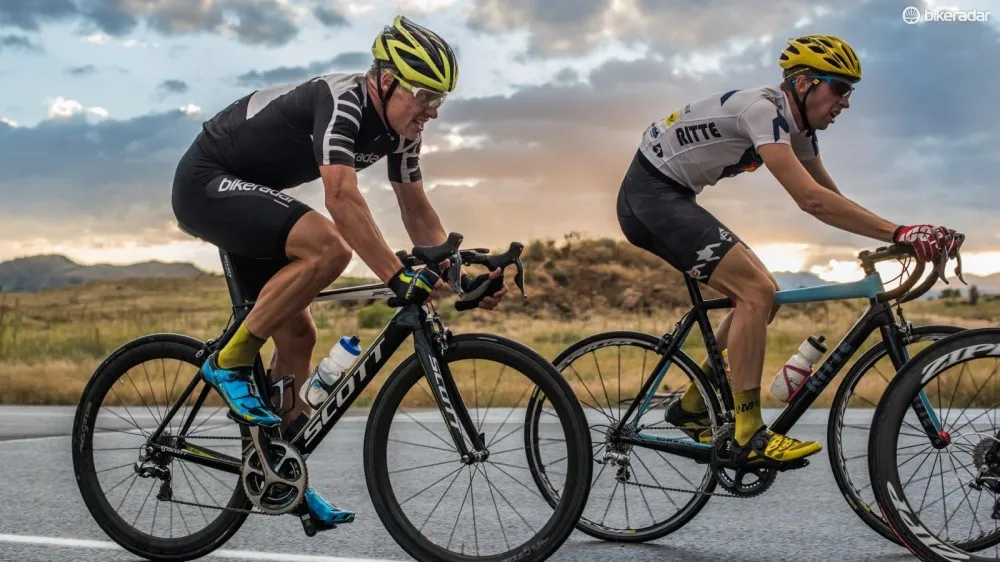
We tested the wheels is a variety of conditions, from rough dirt roads to the high mountains to rainy criteriums
Bontrager shaved some 110g off the set weight from the last iteration. We weighed our set at 1,470g without quick release or rim strips. (Claimed weight is 1,440g.) For wheels with 50mm rims, this is light. For reference, Zipp Firecrest 404s weigh 1,640g and Firecrest 303s with their 45mm rims are 1,570g. Note that the Bontrager tubeless rims strips add 45g per wheel. Still, it's a light setup for an aero wheel, which, combined with the DT Swiss 36t star ratchet hub, makes for a satisfyingly spry acceleration.
The new Aeolus wheels also get a wider, 19.5mm internal rim width, which offers a stout tire platform.
Some testers complained that the previous generation of Aeolus wheels could feel a little soft when out of the saddle. We certainly experienced none of that with these wheels. We found cornering confidence to be high, and one of our heavier testers had no problems with brake rub, even with closely set brake pads. So are these wheels in fact stiffer?
"Formal testing has not shown a significant stiffness increase under standard tests over the previous generation," Bontrager's Alex Applegate said. "That said, they do feel stiffer and have a much improved ride feel. By bringing the production fully in house, we control all aspects of the wheel and apply all of our carbon knowledge and techniques.
"We did back-to-back comparison tests to flush out the new design, and ride feel was an important aspect of those. Driving the differences was in-house production, where we saw less voids, better layups, and significant cuts in weight — all adding up to the improved ride feel," Applegate added.
The aero shape is the same as the previous design, with the 50mm rim maxing out at a 27mm width — slightly narrower than a new Zipp 303 at 28.5mm. But the expanded internal width could boost the overall aero package, Applegate said, as it better aligns the tire and the rim for air flow.
We can't speak to the aero effect of an extra millimeter or two at the brake track, but we can say the Aeolus 5 TLR D3 wheels handle calmly in gusty winds. Further, while you can certainly feel a side load in crosswinds, it doesn't feel as heavy as some other snub-nosed designs. Bontrager attributes this to a relatively lower drag. (Those at Reynolds will tell you that a narrower rim that comes down to a point, a la the company's RZR design, delivers much lower drag still.)
In terms of durability, we coudn't find fault in the wheels. Long, rattling rides on dirt roads and through paved potholes didn't faze the rims or spokes, and numerous power washings left the performance of the hubs similarly unbothered. An older set of Aeolus 3 D3 tubulars with two seasons of cyclocross racing serves as further testament to the wheels: still perfectly true, still without need of hub service.
The wheels come with Bontrager's cork pads, which I've really warmed to but my colleague James Huang found to be a bit underwhelming in terms of power. I like two things about the cork pads: steady, predictable braking and the utter absence of screeching that is all too common with carbon wheels. For rain, however, cork is lousy and borderline scary.
We also tested quite a bit with SwissStop's new Black Prince pads, which are reliable in all conditions and more powerful than the cork, but a bit squeaky on occasion.
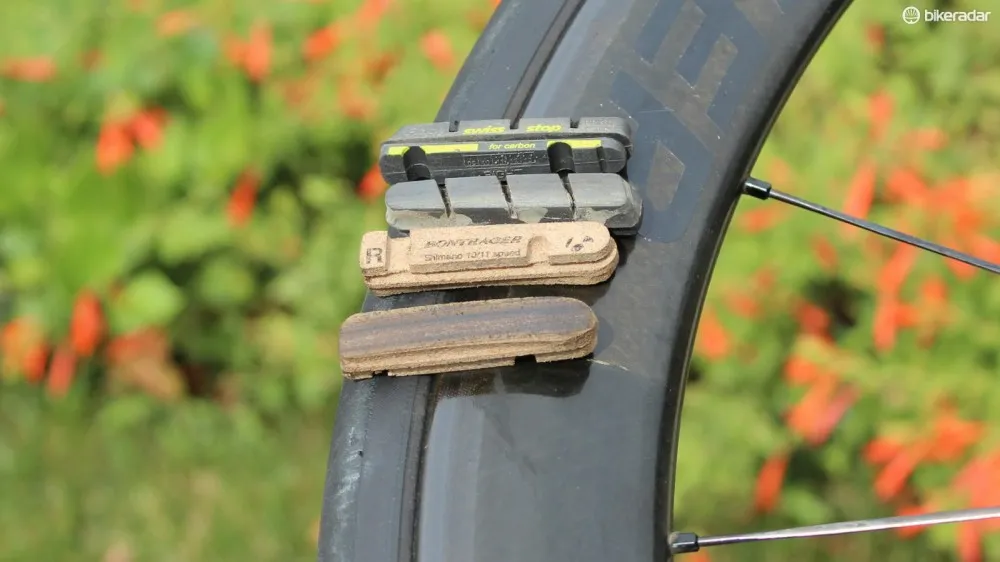
The braking surface is even, without noticeable seams. The cork pads provide a great feel without screeching, but you'll want the SwissStop Black Prince pads for the rain
The wheels come with cloth rim strips for use with tubes and plastic strips for tubeless tires. As stated above, the tubeless strips add about 45g per wheel, and they also add a bit of a hassle. More on that in a bit. They are pretty easy to install: simply stretch and snap into place, then run a tire lever carefully around the inside to get the strips fully flush with the inner rim. Installing tubeless tires isn't as easy as standard clinchers, but for road tubeless isn't too terrible.
Make sure to start opposite the valve (counterintuitive for many roadies), sliding the tire into the center channel, then working your way around the last piece snaps into place near the valve. We had to use a lever for the last bit, despite using soap suds. Still, not that bad for road tubeless. The removable valve cores make for easy installation of the sealant, too: just remove the core and squirt in about 30ml.
Inflating tires — with new strips — is simple. We were able to get six tires to easily seat with a standard floor pump.
The hassle comes when it is time to change tires. In rotating through a few different tires, we were able to reuse a rim strip once out of four times. In addition to dealing with sealant splashing around, you also have to peel the strip out (we used a screwdriver, carefully, to extract the thing), clean the rim, then start again. This is notably different experience than working with Easton's EC 90SL's solid inner rim — no strips required.
Of course, you don't have to run tubeless; the Aelous has this as an additional option to the standard clincher/tube setup.
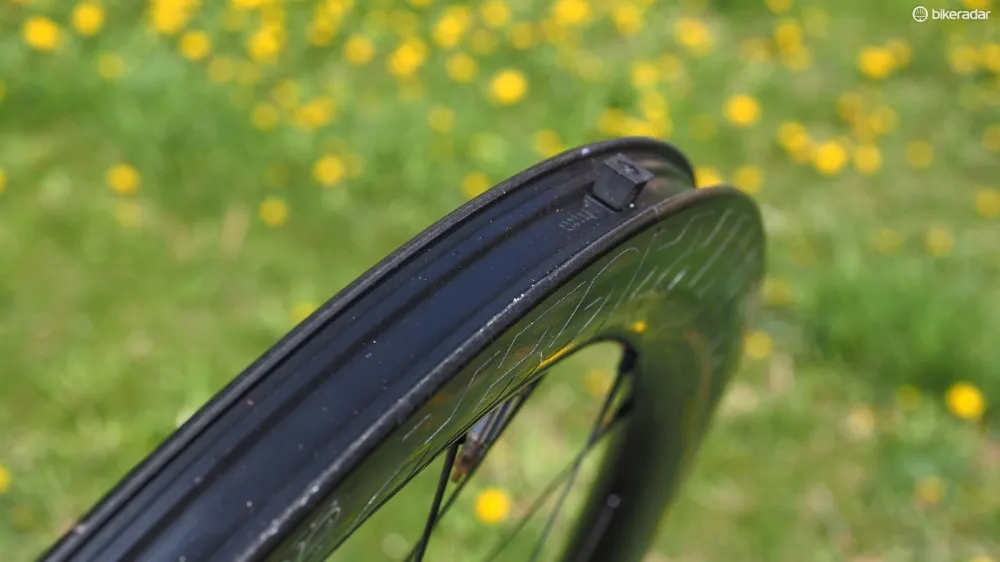
The Aeolus 19.5mm rim with the tubeless strip and valve stem installed
We tested the wheels with Bontrager R3 TLR tires in 24 and 26mm widths. The 26mm tires were great for all-conditions riding, from butter-smooth tarmac to rough dirt roads.
We experienced a few punctures over the course of testing, but never had to stop on the road to install a tube. Every time the sealant did its job, filling the hole and solidifying. Towards the end of one long group ride we heard the telltale 'pss-ss-ss' of a puncture, and the group instinctively slowed to the side of the road. By the time we had stopped, so had the air leakage, and the ride continued. Perhaps the best example of 'thank you, tubeless!' relief was riding home from a friend's house in the dark. The same sound of a puncture, then the quick seal, and an unabated happy ride home.
The piper must be paid at some point, though, and with sealant in tires at road pressure that price is extracted in cleaning time. Sealant sprays out of the tire, and your frame gets messy, fast.
I did experience one situation where a tire failed in a funny way. After coming down Pikes Peak in Colorado, from 14,000ft to about 9,000ft, a friend noticed that my rear tire appeared to have the mumps. Air had worked its way through the inner air retention layer of the tire and was seeking ways out through the tread. I noticed nothing while riding, but perhaps the sustained braking and resulting heat had something to do with it.
We never experienced any burping or any safety issues with the tires.
This is a wheel review, and the rating does not reflect the performance of the tires themselves. Still, we wanted to include our experiences as road tubeless is still fairly new and novel for most riders, and is obviously a notable feature of the wheels.
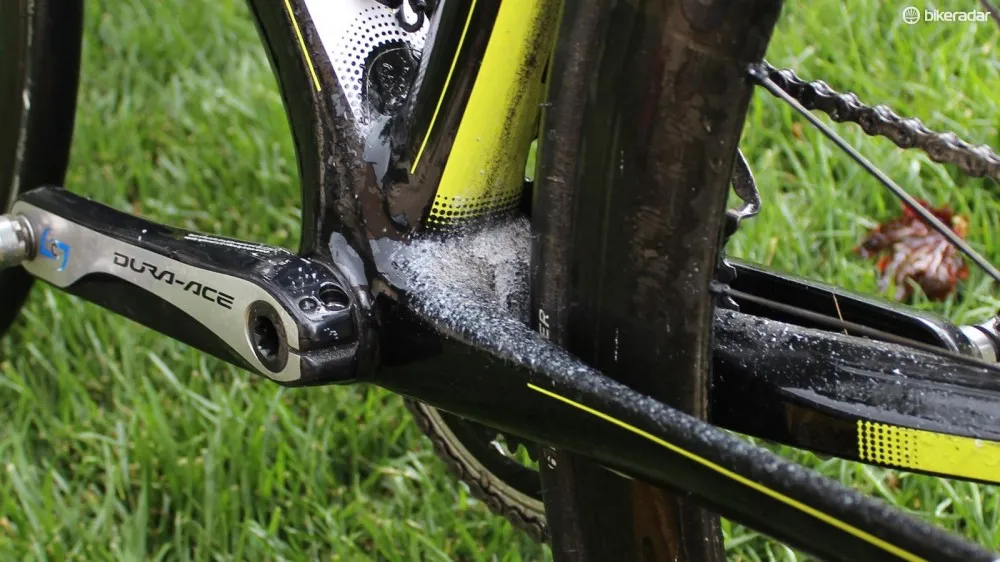
Not having to stop for a flat on the road? Fantastic! Having to clean up the goopy mess from sealant? Less so

